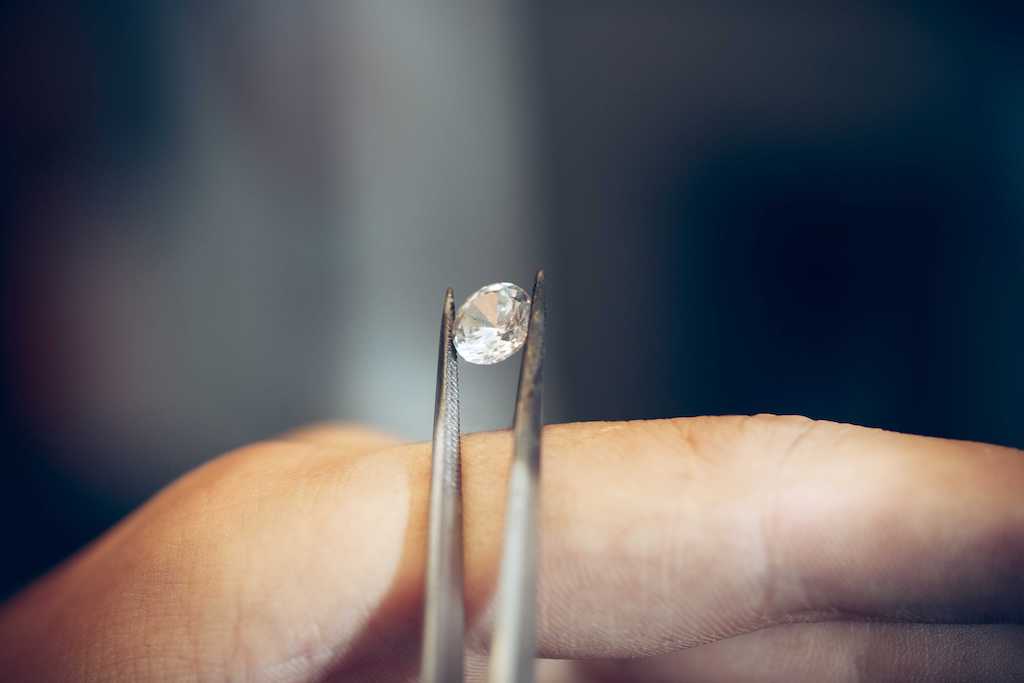In recent years, there has been a significant buzz surrounding lab-grown diamonds, and for good reason. These man-made gems, also known as synthetic or cultured diamonds, are revolutionizing the jewelry industry in ways that few could have predicted. But why exactly are lab-grown diamonds becoming increasingly popular? Let’s delve into the fascinating world of lab-grown diamonds to uncover the answers.
Table of Contents
Introduction to Lab-Grown Diamonds
Lab-grown diamonds are precisely what they sound like: diamonds that are created in a laboratory setting rather than being mined from the earth. Unlike natural diamonds, which are formed over millions of years deep within the earth’s crust, lab-grown diamonds are produced using advanced technology that simulates the natural diamond-growing process. This process typically involves subjecting a small diamond seed to high pressure and temperature conditions in a controlled environment, resulting in the growth of a larger diamond crystal.
The Environmental Impact
One of the primary reasons for the growing popularity of lab-grown diamonds is their significantly lower environmental impact compared to traditional diamond mining. Traditional diamond mining often involves extensive land excavation, warum labordiamanten, and the use of large amounts of water and energy. In contrast, lab-grown diamonds require minimal land use and have a much smaller carbon footprint, making them a more environmentally friendly choice for conscientious consumers.
Ethical Considerations
Another crucial factor driving the popularity of lab-grown diamonds is the ethical considerations surrounding traditional diamond mining. The diamond industry has long been plagued by issues such as child labor, worker exploitation, and conflict diamonds, also known as blood diamonds. By opting for lab-grown diamonds, consumers can ensure that their purchase is free from these ethical concerns, thus aligning with their values and beliefs.
Quality and Purity
Contrary to common misconceptions, lab-grown diamonds are virtually identical to natural diamonds in terms of quality and purity. In fact, lab-grown diamonds often exhibit fewer flaws and imperfections than their natural counterparts, thanks to the controlled conditions in which they are grown. Additionally, lab-grown diamonds undergo the same rigorous testing and certification processes as natural diamonds, providing consumers with peace of mind regarding their authenticity and value.
Cost Comparison
One of the most appealing aspects of lab-grown diamonds is their affordability compared to natural diamonds. While natural diamonds are subject to the unpredictable forces of supply and demand, warum labordiamanten, lab-grown diamonds can be produced consistently and reliably, resulting in lower production costs. As a result, lab-grown diamonds are typically priced significantly lower than natural diamonds of comparable quality, making them an attractive option for budget-conscious consumers.
Popularity and Market Trends
The popularity of lab-grown diamonds has been steadily increasing in recent years, driven by shifting consumer preferences and growing awareness of their benefits. According to industry reports, the market for lab-grown diamonds is expected to continue its rapid growth trajectory, with more consumers opting for these sustainable and ethically sourced alternatives to natural diamonds.
Fashion and Trends
In addition to their environmental and individuelle verlobungsringe, lab-grown diamonds are also making waves in the world of fashion and luxury. Celebrities, influencers, and fashion-forward individuals alike are increasingly choosing lab-grown diamonds for their jewelry collections, recognizing them as a stylish and socially responsible choice. This shift in consumer behavior is driving a broader trend towards sustainability and ethical consumption in the fashion industry.
Durability and Longevity
Despite common misconceptions, lab-grown diamonds are just as durable and long-lasting as natural diamonds. Both types of diamonds are composed of carbon atoms arranged in a crystalline structure, giving them their renowned hardness and brilliance. In fact, lab-grown diamonds undergo the same stringent testing for hardness and durability as natural diamonds, ensuring that they can withstand the rigors of everyday wear and last a lifetime.
Customization and Variety
One of the key advantages of lab-grown diamonds is the flexibility they offer in terms of customization and variety. Because they are grown in a controlled environment, lab-grown diamonds can be produced in a wide range of sizes, shapes, and colors, allowing consumers to create truly unique and personalized pieces of jewelry that reflect their individual style and preferences.
Consumer Awareness and Education
As consumer awareness of lab-grown diamonds continues to grow, so too does the need for education and transparency within the industry. Dispelling common misconceptions and providing accurate information about the benefits of lab-grown diamonds is essential to ensuring that consumers can make informed choices when purchasing jewelry. By empowering consumers with knowledge, we can foster a more sustainable and ethical diamond industry for the future.
Global Acceptance and Regulations
Lab-grown diamonds are gaining increasing acceptance and recognition on a global scale, with many countries and jurisdictions embracing them as a legitimate and ethical alternative to natural diamonds. In recent years, several regulatory bodies have implemented standards and certifications specifically for lab-grown diamonds, further solidifying their status in the jewelry industry.
Technological Advancements
Advancements in diamond-growing technology continue to push the boundaries of what is possible with lab-grown diamonds. From improvements in production efficiency to innovations in diamond coloration and clarity enhancement, ongoing research and development efforts are driving continuous innovation in the field of lab-grown diamond production. The future holds exciting possibilities for further advancements in technology and the continued evolution of lab-grown diamonds.
Cultural and Symbolic Significance
As lab-grown diamonds become increasingly mainstream, their cultural and symbolic significance is also evolving. No longer viewed as mere alternatives to natural diamonds, lab-grown diamonds are gaining acceptance and appreciation for their own unique qualities and characteristics. Whether it’s an engagement ring, a wedding band, or a special piece of jewelry to mark a milestone occasion, lab-grown diamonds offer a meaningful and sustainable choice for today’s discerning consumers.
Sustainability in the Jewelry Industry
In conclusion, the rising popularity of lab-grown diamonds reflects a broader shift towards sustainability and ethical consumption in the jewelry industry. As consumers become more aware of the environmental and ethical implications of their purchasing decisions, lab-grown diamonds offer a compelling solution that aligns with their values and beliefs. By choosing lab-grown diamonds, consumers can not only enjoy beautiful and high-quality jewelry but also contribute to a more sustainable and ethical future for the diamond industry.








